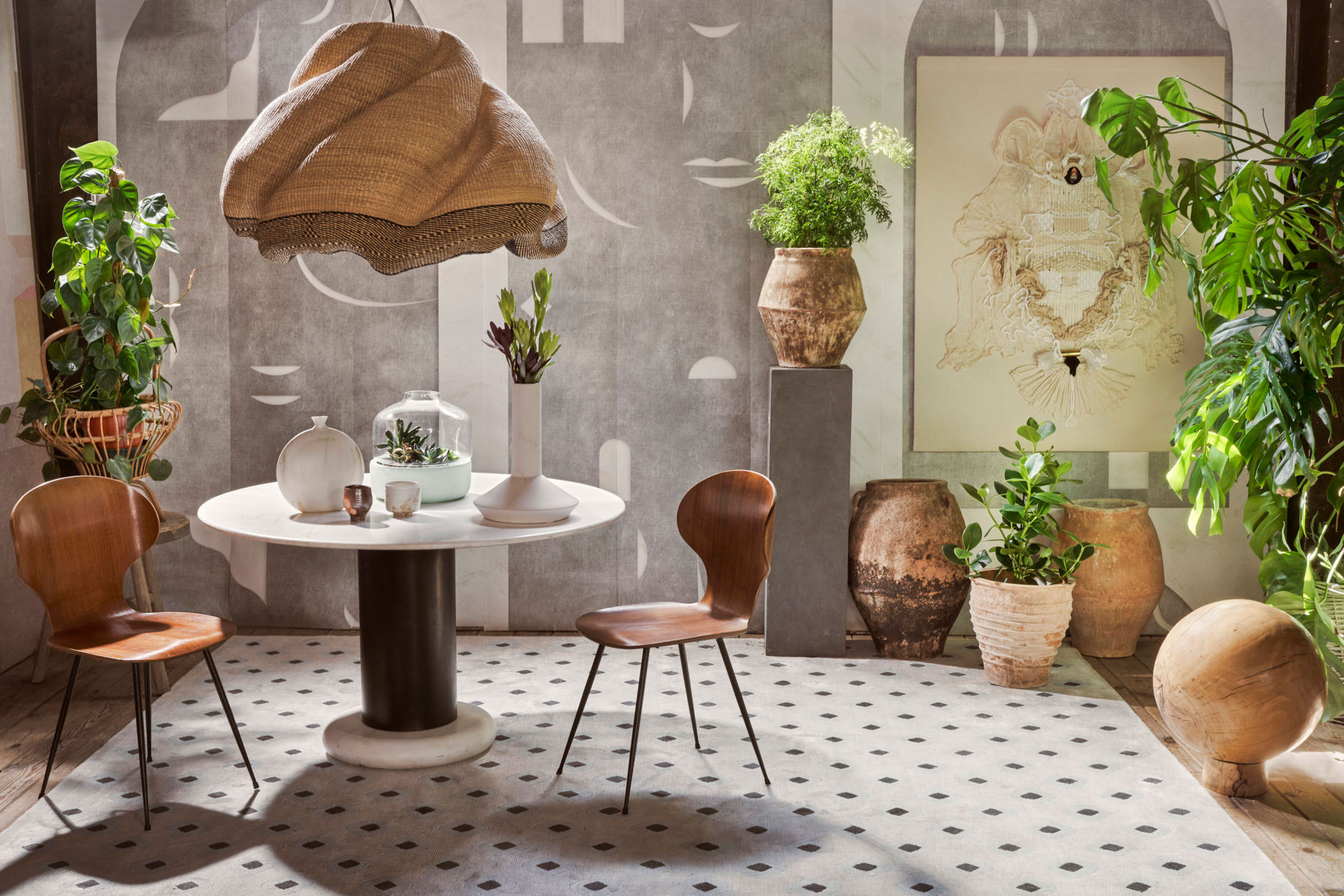Environmental consciousness goes far beyond your food choices, wardrobe, and gadgets. Every decision you make has an impact on nature, including how your living spaces are designed. As we continue to build more durable, longer-lasting homes, it's crucial to take a moment and consider the environmental impact.
Meanwhile, Eco-interiors are revolutionising interior design by seamlessly blending sustainability with creativity. This approach focuses on enhancing indoor air quality while significantly reducing your carbon footprint.
But what does carbon footprint mean in interior design? It's nothing but the total amount of greenhouse gases (particularly carbon dioxide) released into the atmosphere throughout your interior space's entire lifecycle. This includes everything from the materials you select and how they're manufactured, to their transportation, installation process, and eventual disposal. Every element contributes to your interior's overall carbon impact.
And by embracing eco-interiors, you are consciously making a sustainable choice without sacrificing style.
This article explores the core principles of eco-interiors and provides actionable steps to reduce your carbon footprint through thoughtful design choices.
Core Principles of Eco-Interiors
The 4 R's of Sustainability
At sustainability's foundation lie four key principles: Refuse, Reduce, Reuse, and Recycle. In eco-interior design, this translates to refusing toxic materials and finishes, reducing consumption, reusing existing materials, and recycling old furnishings while choosing products with minimal packaging.
Practical Application:
- Refuse synthetic carpets treated with harmful chemicals; choose natural fiber rugs instead
- Reduce furniture purchases by repurposing existing pieces
- Reuse vintage furniture by refinishing rather than replacing
- Recycle old textiles into new decorative element

Choose Your Materials Wisely
Natural materials form the backbone of sustainable interiors. Organic cotton, wool, silk, and other natural fibers offer exceptional versatility for pillows, comforters, mattresses, and floor coverings. These materials are biodegradable, renewable, and often require less energy to produce than synthetic alternatives.
Smart Material Choices:
- Flooring: Bamboo, cork, or reclaimed hardwood
- Furniture: Solid wood pieces that can be refinished multiple times
- Textiles: Organic cotton curtains, wool rugs, and linen upholstery
- Finishes: Low-VOC paints and natural wood stains

Harness Natural Light and Indoor Plants
Natural light reduces dependence on artificial lighting while creating healthier living environments. Instead of relying solely on air purifiers, incorporate indoor plants that naturally filter air by removing fine particles and absorbing carbon dioxide, ensuring your space remains naturally breathable.
Natural Enhancement Ideas:
- Install skylights or larger windows wherever possible
- Use light-colored paint to reflect natural light throughout spaces
- Position mirrors strategically to amplify natural light
- Choose plants like snake plants, pothos, or peace lilies for effective air purification

Maximise Energy Efficiency
When natural sunlight isn't available, LED lighting becomes your best eco-friendly alternative. These bulbs consume 75% less energy than traditional incandescent bulbs and are more environmentally friendly than compact fluorescents.
Beyond lighting, energy-efficient appliances and proper insulation dramatically reduce energy consumption, lowering both costs and environmental impact. Smart home technologies can further enhance efficiency by automating lighting, heating, and cooling systems based on occupancy and natural light levels.
Energy-Saving Strategies:
- Install programmable thermostats to optimise heating and cooling
- Incorporate ceiling fans to reduce air conditioning needs
- Choose ENERGY STAR-rated appliances

Adopt Low-Waste Construction Methods
Construction debris represents a significant waste source during renovations. Modular design methods help minimise waste by utilising prefabricated components that fit together efficiently. Careful planning ensures materials are used optimally, reducing excess and preventing unnecessary landfill contributions.
Waste-Reduction Techniques:
- Donate or sell usable materials before renovation begins
- Choose modular furniture systems that can be reconfigured
- Work with contractors experienced in sustainable building practices

Overcoming Common Challenges
While adopting sustainable interior design practices offers numerous benefits like efficient cost, healthier living spaces and unique aesthetics, it can present a few challenges. Sourcing reclaimed materials or finding skilled artisans may require extra effort and research. However, the growing popularity of eco-interiors makes these options increasingly accessible.
Practical Solutions to overcome challenges:
- Create a detailed renovation timeline that accommodates sustainable sourcing
- Set aside extra time for finding quality reclaimed materials
- Connect with local artisans who specialize in upcycling and restoration
- Join online communities focused on sustainable living for recommendations
- Explore online platforms specialising in sustainable materials
The eco-interior design movement is gaining significant momentum, making eco-friendly practices more accessible than ever. By embracing these principles, you're not just creating a beautiful and unique home but contributing to a more sustainable future while enjoying the unique character and health benefits that come with thoughtful, environmentally conscious design choices.
At Metaphor Interiors, sustainability is at the heart of everything we do. We design functional, beautiful spaces that align with eco-conscious living.
About Metaphor Interiors:
We co-create apt and thoughtful homes that celebrate living. Our team of designers, engineers, and craftsmen brings thoughtful design, precision, and seamless execution to each project. With a focus on earth-friendly, functional, and inspiring interiors, we aim to align every home with the homeowner’s aspirations and lifestyle needs.
With over 30 years of experience, we’ve designed and delivered hundreds of high-end homes and hotel interiors across India—always striving to stay on budget and on time.
If you are an Organo Homeowner and want to explore our design solutions, write to us at info@metaphorinteriors.co.in.

